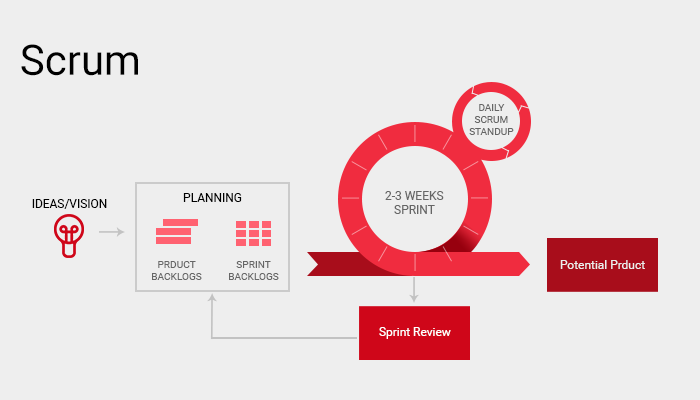![]()

Having a flexible technology solution is a fantastic asset for any company to provide to their customers. However, in a fast and intricately connected digital world, having the right technology is only part of the equation. W, and with FinTech quickly advancing as a lending alternative, finance companies are striving to find ways to get things done faster, cheaper, and digitally. Financial Market strategist, Chris Skinner, has said, “Banks are fully aware of the threats and challenges posed by FinTech companies, it’s keeping up with them that is the problem.”
Organizations that have converted from legacy systems to more robust technology solutions now realize that their business mindset can either inhibit them from growing, or it could be the fuel to their fire that burns with innovation. While the AAgile mindset has long been utilized by entrepreneurs and small companies alike, more and more technology giants are finding new life with the AAgile methodology.
But what exactly does Agile mean?
Agile was originally used in the mid-90s to provide software developers with a flexible and productive work environment different from the conventional bureaucratic Waterfall techniques at the time. These highly dynamic environments encourage teamwork, self-organization, and accountability; furthermore, aligning development with customer needs and company goals. While some might think of aAgile as disorderly, there is a method to the madness, and it is highly focused, but incredibly versatile.
A Method to the Agile Madness
There are different models utilized in Agile, anything from Lean to the more easily implemented Scrum, and variations tailored to the individual teams. Despite any differences, they all share the same iterative and incremental characteristics that are associated with adaptive behavior to reach development goals. Instead of having an entire company entirely focused on one project, the company completing completes each step before moving onto the next, they havinge individual teams focused on working on smaller aspects of these projects, parallel to one another. The real beauty lies in recognition of a customer’s tendency to change their minds during the development process, and how difficult it can be to adapt to a traditional waterfall method. Agile allows team members to meet these challenges without the burden of making customer predictions, and then continuously benefiting from feedback during the iterative process.
The Framework
The framework for Scrum is made up of the Team (Product Owner, ScrumMaster, and Development Team), the Backlog, and the Sprint (planning, execution, daily stand-up, retrospective, and review).
The Product Owner is the person that determines how the end user will benefit most from the final product, and responsible for the building and prioritizing of the Backlog. Scrum Master is the person who coaches the development team and serves the Product Owner and organization to maximize benefits of the scrum system. The Development Team is a group of experts who are responsible for designing, building, and testing to achieve the final product. This self-organized group focuses on accomplishing the goal set out by the Product Owner.
Ready, Set, Sprint…
The Sprint is all about achieving the team’s goal through the use of a flexible plan and guide, set out by the Product Owner in 4 weeks or less. Each day, the Development Team will meet for 15 minute (stand-up) meetings to discuss what was done the previous 24 hours, and what they want to accomplish as a team in the next 24 hours. At the end of the Sprint, a Sprint Review is held to discussdiscuss with the stakeholders what occurred during the Sprint with the stakeholders, and to adjust the Backlog as necessary for the upcoming Sprint. The Retrospective is the opportunity for the Scrum Team to discuss what happened during the Sprint, and what changes they might need to make for increased efficiencies in future Sprints.
The Beauty of the Backlog
The Backlog is divided into two categories, the Product Backlog, and a sub-category called the Sprint Backlog. The Product Backlog is always determined by priority. T, the Product Owner controls and adjusts this the ordered list as needed, based on feedback from the stakeholders. The Backlog may contain new features, existing functions that need bug fixes, or other technical improvements.
The Sprint Backlog is modifiable throughout the Sprint based upon the daily stand-up meetings. This highly visible list of goals is only changeable by the Development Team. This allows for the team to determine the remaining work need, and to make adjustments to meet goals by the end of the pre-determined Sprint period.
MindSet
Company mindsets are continuously transforming from rigid and sequential to the free-flowing and adaptive methodology of Agile. Finance institutions that were once built to scale are busting down the silos that stifled creativity and opening doors for technology teams within their organization to share their ideas in an innovative and collaborative environment. How is your organization’s mindset helping you to fend off FinTech? Is it business as usual? Or are you Agile?
Photo credit: Maxartkiller
M. (2015). Scrum . Retrieved August 20, 2017, from http://maxartkiller.in/scrum-methodology-plan-for-best-and-create-better-sprints/
